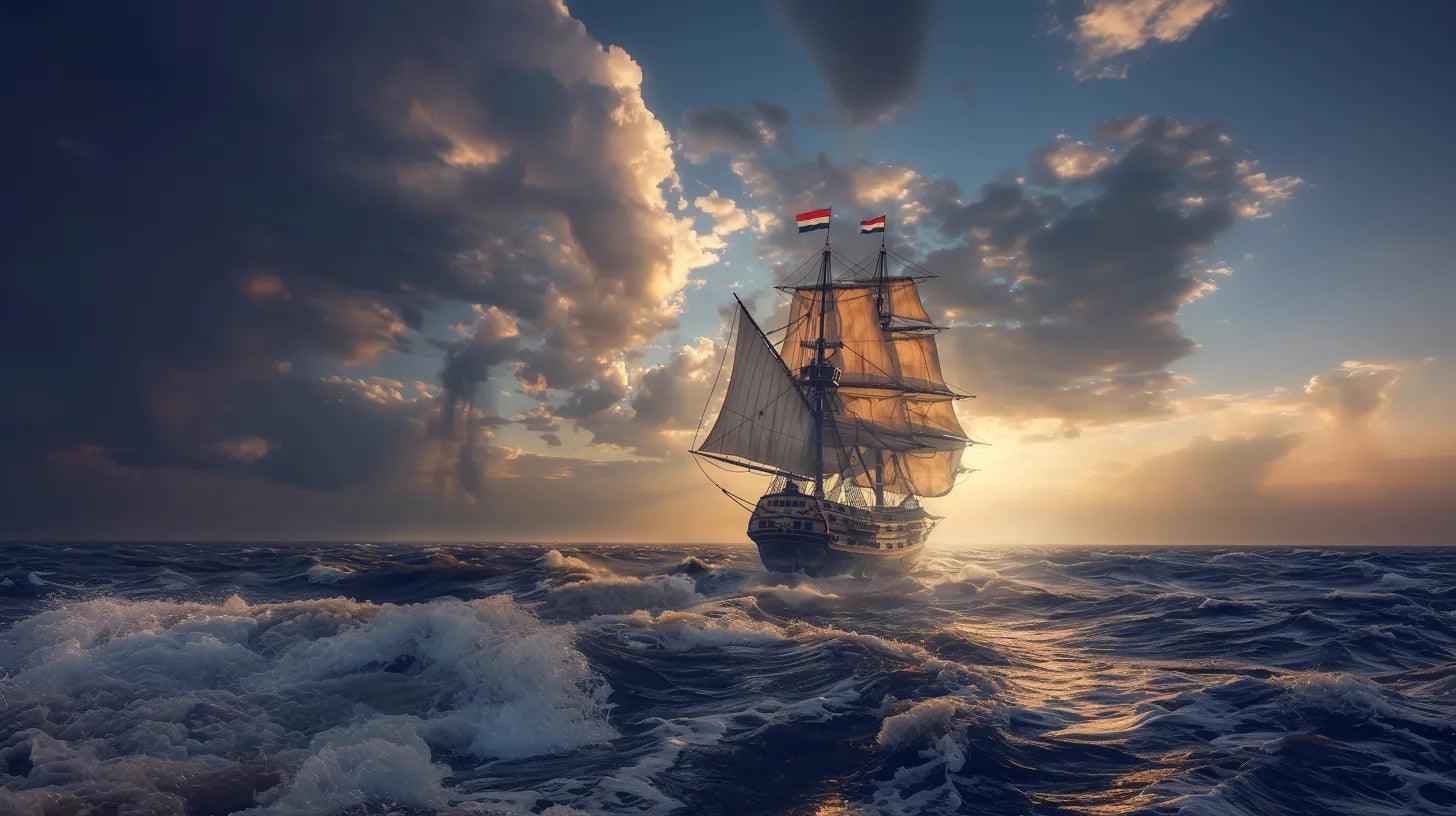
Vliegenthart: Final Voyage of a Treasure-Laden Tragedy at Sea
The Vliegenthart, translating to "Flying Hart" in Dutch, was a beacon of 18th-century naval engineering and a vital cog in the Dutch East India Company's trading prowess. Its story is a dramatic tapestry woven with ambition, tragedy, and buried treasure—a narrative that has captivated historians and treasure hunters alike.
A Storied Vessel
Constructed in the shipyards of Middelburg for the Chamber of Zeeland, the Vliegenthart was launched on 11 December 1730. As an East Indiaman, or "mirror return ship," she represented the might and wealth of the Dutch Republic during the height of its maritime commerce.
The Captain and Crew
The maiden voyage from Fort Rammekens to Batavia (now Jakarta, Indonesia) was helmed by Captain Abraham van der Hart. On her final departure on 3 February 1735, she was under the command of Captain Cornelis van der Horst. Together with the crew and passengers, they set sail towards the lucrative markets of the East Indies, unaware of the fate that awaited them.
The Ill-Fated Journey
On that fateful February day, the Vliegenthart, along with her sister-ship Anna Catherina, encountered a deadly combination of a northeast gale and a spring tide. Navigational errors sent them both into the treacherous sandbanks of the Scheldt estuary. Despite distress cannons fired from the Vliegenthart, both ships succumbed to the sea, taking down every soul on board.
The Lost Treasure
The Vliegenthart was not merely transporting goods; she was a floating treasury carrying wood, building materials, iron, gunpowder, wine, and most importantly, chests filled with gold and silver coins. The estimated value of the coins alone was 67,000 guilders— a fortune lost to the depths.
Rediscovery and Salvage
For years, the Vliegenthart was consigned to the annals of forgotten shipwrecks until a secret map, emerged in 1977, led to the rediscovery of the wreck by divers under Rex Cowan in 1981. Remarkable artifacts, including intact coffers of 2,000 gold ducats and 5,000 silver reales, were retrieved, alongside several cases of silver ducatoons—believed to be contraband as they were not listed on the official cargo documents.
Conclusion
The Vliegenthart remains a poignant reminder of the risks undertaken during the golden age of Dutch maritime trade. Its story, etched into the seabed and brought to light centuries later, continues to fascinate and remind us of the human stories behind historic shipwrecks.




